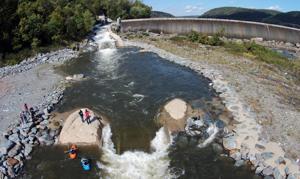Unlike surfers, bodyboarders are able to combine the power of arms,
legs and feet to paddle in salted water. But you have to do it
rhythmically and in cooperative mode.
"When you're paddling through flat water, use your arms; when you're
paddling through turbulent water use your legs, and when you need to get
somewhere quickly, use both your arms and legs," explains Rob Barber,
author of "The Bodyboard Manual."
If you're simply arm paddling, move your body forward and keep your
legs straight and together behind you. You face should almost be in line
with the nose of your board.
Arch your back and keep your head up, watching where you're going.
Use the front crawl style stroke - alternate arms - reaching as far
forward as you can and diving your arm as ...more


